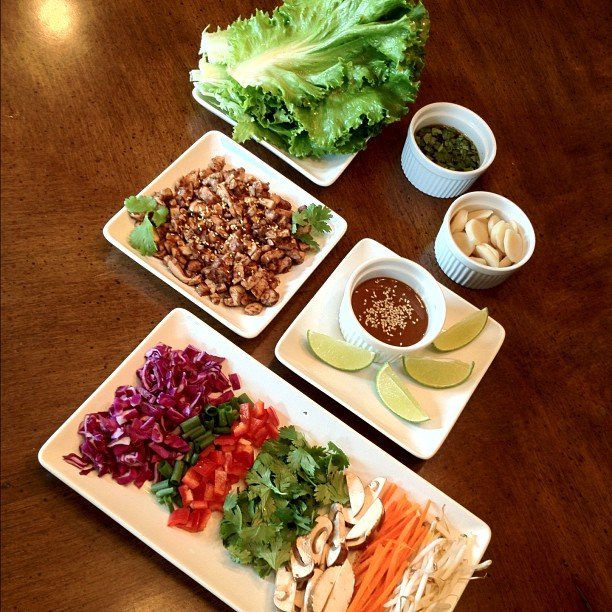The Paleo diet is one of the most popular food trends in the nation these days. It focuses on eating foods that have been processed as little as possible. Photo by Courtesy Flickr/David Reber’s Hammer Photography
People are going back to their "hunter-gatherer" roots and attempting to emulate caveman eating habits. This growing lifestyle trend is called the paleo—short for paleolithic—diet.
The rules of the diet include eating only grass-fed animals, fish and seafood, fresh fruits and vegetables, nuts and seeds, and eggs. Paleo dieters also only use healthy oils to cook food.
The concept is to consume foods that have around for centuries and foods that are as processed as little as possible. Cereal grains, legumes (even peanuts), dairy, refined sugar, potatoes, processed foods, salt, and refined vegetable oils are all on the "Don't Eat" list.
Although versions of the paleolithic diet have been around for years, the lifestyle is seeing a resurgence thanks in some part to Loren Cordain, who has a doctorate in health and has studied diet and disease on an evolutionary basis. Cordain has published several books, including "The Paleo Diet: Lose Weigh and Get Healthy by Eating the Foods You Were Designed to Eat," (Houghton Mifflin Harcourt, Revised 2013, $14.95), a paleo cookbook and a version of the diet aimed at athletes.
The managing director of Mississippi Crossfit, Janelle Johnson, highly recommends the paleo diet. "Getting through the first week is the hardest, because cutting back on sugars and processed foods is hard," Johnson says. "(But) your body starts to feel better, because you are not inhaling processed chemicals."
Eating paleo requires that 35 to 45 percent of your daily calories intake comes from non-starchy fresh fruits and vegetables. The diet eliminates all processed and junk foods, added sugars, and refined grains.
Though many health professionals and fitness experts recommend it, the paleo diet isn't the easiest to adopt. American restaurants and grocery stores are full of processed foods, carbohydrates and high fats. It can be difficult to completely eliminate these foods.
Also, due to the rising cost of fresh goods, maintaining the rules of the paleo diet can be expensive. Johnson suggests shopping on the perimeters of grocery stores to find staple items (a good tip for finding less processed food no matter your dietary lifestyle).
But the paleo diet doesn't have to be all or nothing. Slowly changing your diet to include fewer processed foods, even if you can't commit to going full caveman, is still a positive change.
Despite the barriers, eating paleo and "eating clean" is becoming increasingly popular across the country. One reason is because dieters don't have to deal with counting calories. You eat when you're hungry and stop when you're full.
If you want to try paleo, ask your doctor. Trying to drastically change your diet cold turkey can be dangerous.
Some tips for hunter-gatherers:
• Experiment: Try the diet in increments. Cut something out for a week, see how you feel, and continue to build on those weeks.
• Remove temptation: If you want to jump into paleo head on, the first step is to remove all junk food.
• Cook: Since the paleo diet is based from whole and fresh foods, it is easier to cook meals at home.
• Find a community: It's normal to cheat, but don't feel like a failure. Many blogs, forums and support groups exist to help you connect with others and get back on track.
• Read labels: Be sure to read ingredient lists closely when buying packaged products.
• Read: Besides Loren Cordain's books, beginners could try: "Practical Paleo: A Customized Approach to Health and a Whole-Foods Lifestyle," by Diane Sanfilippo (Victory Belt Publishing, 2012, $39.95).


